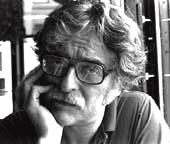Dirck has asked
all of us, over the next few months, to address the issue of the digital
revolution in photojournalism. I think there has been a digital revolution,
several of them, but none in photojournalism.
Admittedly, current usage has downgraded the term "revolution."
If you are willing to accept the introduction of technology that has
not significantly changed the end result of photojournalism - then
there has been a digital revolution. There has also been a Speed Graphic
revolution, a photo offset revolution, a Rolleiflex revolution, a
Fairchild Scanagraver revolution, an autofocus revolution, e.t.c.,
e.t.c..
When computers evolve from a building filled with binary off/on switches
to a laptop with significantly more computing power, that's a digital
revolution.
In other fields of communication there have been digital revolutions.
The internet and email that threatens the postoffice, those are revolutions.
The music CD is the digital end product of a number of digital processes
in addition to the analog ones like playing a musical note on a conventional
instrument. The difference between Muddy Waters and Madonna is the
difference between analog and digital.
The DVD of a feature film is another digital end to an increasingly
digital process. Think of an early Godzilla movie; then go
see Spielbergs's A.I..
Far more important to me is the commercial release of a digitally
photographed feature film like "The Anniversary Party."
Without the economies of shooting digitally, it might not have been
made. It is hardly the first digital "movie." But it's one
of the most significant.
Jennifer Jason Leigh and Alan Cumming wrote, produced, directed and
starred in a movie that doesn't have a happy ending. The writing,
producing and directing of folks known primarily as actors must have
scared the hell out of some potential backers . But it was shot in
nineteen days by DP John Bailey (an old hand at film, but a newcomer
to digital). There is a significant drop in production and some post
production costs. I suspect the cast (50% stars and 50% actors' actors)
kept the upfront money in check.
By keeping the production cost far below that of a "Hollywood
movie," a film that might never have been made, or made so cheaply
that it couldn't support the production values necessary for broad
commercial release, showed up at my neighborhood movie house.
A degree of independence from a killer budget allowed the making of
a movie whose characters, action and outcome is about as far as possible
from this weekend's killer, blockbuster, big hit release. Thank god.
No monsters (at least not of the non human kind). No talking bunnies.
No exploding planets. Just that old fashioned, not hip spectacle of
human beings unraveling. Watch the family dog; he's the only one with
moral fibre.
Digital technology is also being used in journalism. In some production
aspects it has been used for twenty years. And it saves money in journalism,
just as it does in film production. So does paying photographers less
money for more rights. So does avoiding issues that might offend and
lose readers or advertisers. When the economies of the digital world
are used to produce well and fully reported stories, perhaps on unpopular
topics, in independent publications - that will be a revolution.
Bill Pierce
Contributing Writer
bicpi@earthlink.net

